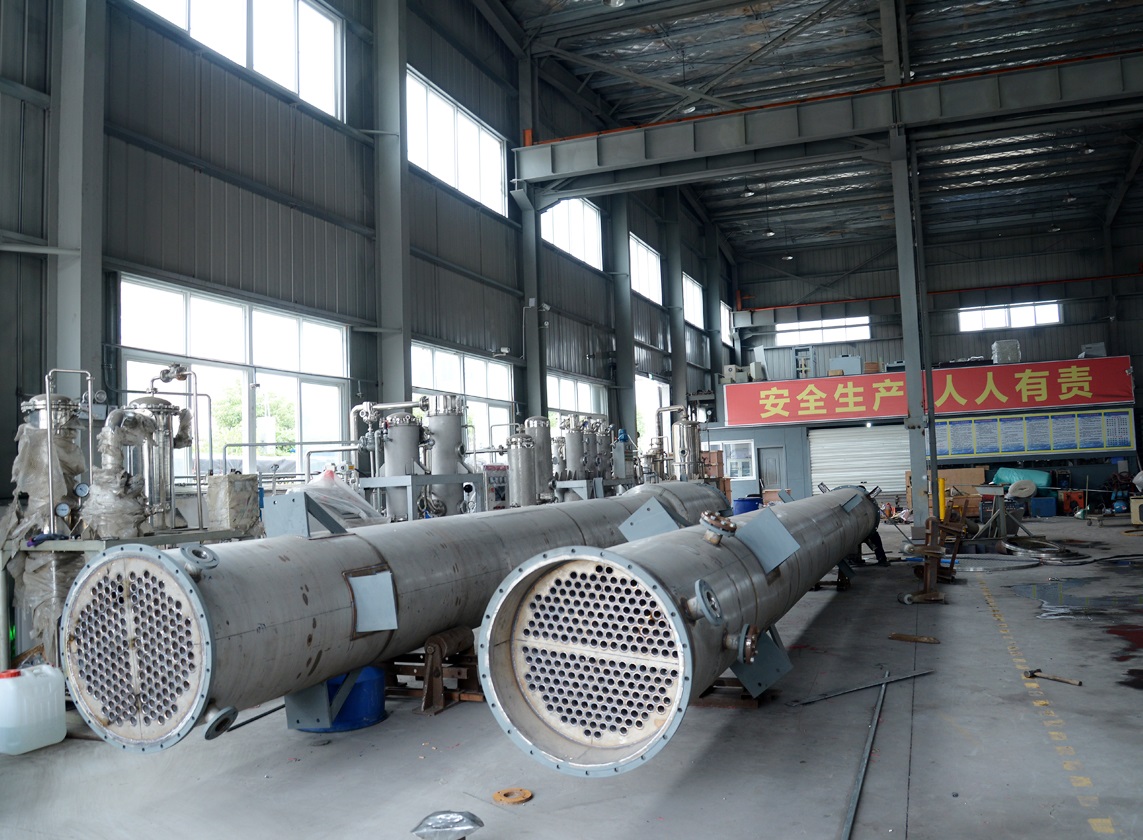There are many types of evaporators for chemical wastewater. Regardless of which, the refrigerant vapor must be able to leave the heat transfer surface quickly and maintain a reasonable liquid level height when designing and manufacturing, so as to make full use of the heat transfer surface effectively. A small amount of swallow vapor produced during the throttling of refrigerant liquid can be separated from the liquid by the vapor-liquid separation equipment, and only the liquid separated from the vapor can be sent to the evaporator to absorb heat, so as to improve the heat transfer effect of the evaporator.
If the liquid can boil and vaporize on the wet heated surface, the root of the bubbles is small, and the volume of the bubbles formed is small, and the bubbles are easy to rise away from the heated surface. If the liquid can not boil on the wetted heated surface, the volume of bubbles formed is larger, the root is larger, and the number of vaporization cores will be reduced. At this time, the bubbles will gather on the heating surface and develop along the heating surface to produce a vapor film, resulting in an increase in thermal resistance and a decrease in exothermic coefficient. Some commonly used refrigerant liquids have good wettability, so they have good heat release performance. Ammonia has better wettability than Freon.
In evaporator, when the refrigerant liquid on the refrigerant side is mixed with lubricating oil, the oil will wither greatly at low temperature, easily adhere to the heat transfer surface and form oil film, which will increase the heat transfer resistance. At the same time, the formation of oil film will also hinder the refrigerant liquid from wetting the heat transfer surface and reduce the heat transfer efficiency. In serious cases, the refrigerant will absorb no external heat and lose its refrigeration work. Use.
Water, brine and air are common cooling media in refrigeration devices. Their heat release intensity is related not only to their physical properties, but also to external factors such as flow velocity, shape of flow velocity and flow path. When the flow rate is high, the geometrical shape of the flow rate and the flow path are reasonable, the heat release coefficient increases, but the corresponding power consumption and the cost of basic facilities also increase. The most suitable flow rate and the layout of fluid passage should be determined by technical and economic analysis and comparison.

Add: No.818, 2rd Road, 4th Lane, Binhai Industrial Zone, Wenzhou, Zhejiang,China.
电话:+86-577-86901555 86807755
传真:+86-577-86807766
TAIKANG EVAPORATOR
Mobile CN
Mobile EN
Powered by www.300.cn 浙ICP备14011465号-1 Zhejiang Taikang Evaporator Co., Ltd
TAIKANG
News
The influence of structure type of chemical wastewater evaporator on heat transfer of evaporator?
Page view
Previous article:
无
TAIKANG
National Free Hotline





